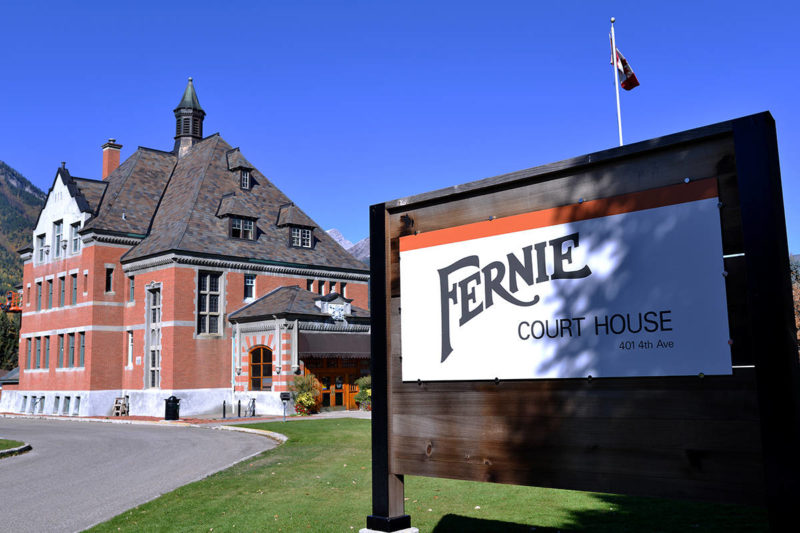While most visitors to Fernie no doubt visit for the amazing scenery and outdoor pursuits, it would be a shame to overlook the history and architecture of this historic town.
The Great Fire of 1908 destroyed many of Fernie’s buildings in just an hour and a half, resulting in a wave of reconstruction.
Fernie city council made a law that “all buildings within a 10-block section be constructed of fireproof material,” and so began the rebuilding of a fire-resistant town.
Builders used locally produced yellow brick to construct the new buildings. For years, planks of wood crisscrossed Fernie’s downtown, as a way for people to cross the muddy streets. It wasn’t until 1922 that streets were paved and Second Avenue (originally called Victoria Avenue after Queen Victoria) was first covered with cement. Other streets were at one time covered with old cinders from the coke ovens.
A quick walk around the downtown area will reward you with some fine examples of architecture from this era, with many buildings celebrating 100 years of existence.
The Fernie courthouse
Fernie’s courthouse was built in 1909 after the Great Fire, with the finishing touches done in 1911.
The courthouse is the fourth to serve the city. The third courthouse, built in early 1908, was destroyed by the fire in August.
The building was built by local Fernie contractor J.A. Broley, and designed by George Stanley Rees who was from Calgary.
The community took a keen interest in the progress of the courthouse and often commented on its progress in The Free Press.
The first court session was held on March 16, 1911, with Judge Wilson presiding.
In August 2002, the last court session was held in Fernie as a result of provincial cutbacks. But in 2003, with the support of the community, the City of Fernie purchased the courthouse from the province with the intent of filling the building with occupants and holding court sessions in the city again.
The Leroux mansion
A.B. Trites House, or the Leroux Mansion, was built in 1912, and is the largest heritage home in Fernie.
The impressive Craftsman or Tudor Revivalist home was built for local Fernie merchant Amos Bliss Trites.
Both the interior and the exterior reflects the Craftsman style, which was emphasized by the Craftsman magazine. Craftsman homes were to be suited to the life that was lived in it, should harmonize with the environment, and should be built from natural materials.
Trites was described in his obituary in The Free Press as one of B.C.’s leading mining men, who “helped organize the Premier mine and was a central figure in the development of some of the best-known fields in British Columbia.”
The home is located at 341-4th Ave. in the middle of a densely wooded site that conveyed the prosperity of Trites.
Even though Craftsman-style homes were from the late 1800s to the 1930s, the style wasn’t common in Fernie, making A.B. Trites house a unique landmark.
The Victoria Hotel
The Victoria Hotel was the first hotel erected on the new townsite and provided accommodation for 40 guests.
The Victoria was located on the corner of Second Avenue and Fourth Street, or Victoria Avenue and Wood Street as they were called at the time. It was one of Fernie’s busiest intersections.
In 1901, rates were $2 per day, and the hotel also offered a fully stocked bar, and regular musical entertainment for its guests.
The Souvenir Edition of The Fernie Free Press in 1901 read, “The Victoria Hotel is the place to drop in for an evening to hear good music and get a glass of good beer. Prof. Harry Swift is there every night and it pleases him to amuse you.”
In 1902, former hotel manager John L. Gates became proprietor, and refitted the bar and guest rooms in this “high-class hotel.” Porter service from the hotel met every train.
The hotel was lost in the fire of 1904, and Gates applied to transfer his licence. Rather than rebuilding on this site, he built the King Edward Hotel on the corner of Victoria Avenue and Hanson Street.
The TD Canada Trust is now located on the lot that used to house the Victoria Hotel.
Finding out a little about the history of some of Fernie’s buildings makes them come to life in our imaginations. To learn a little more about them, contact the Fernie Historical Society.
To plan for future adventures in Fernie and throughout the West Coast, visit westcoasttraveller.com.











 Nordic skiing in Fernie, BC
Nordic skiing in Fernie, BC